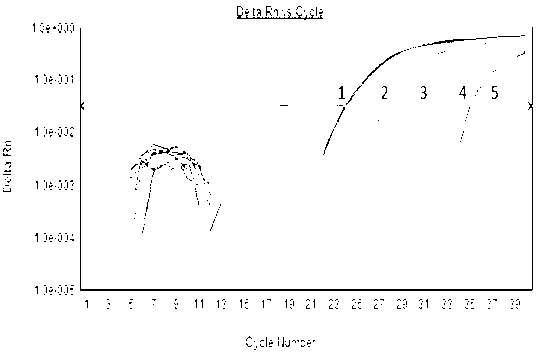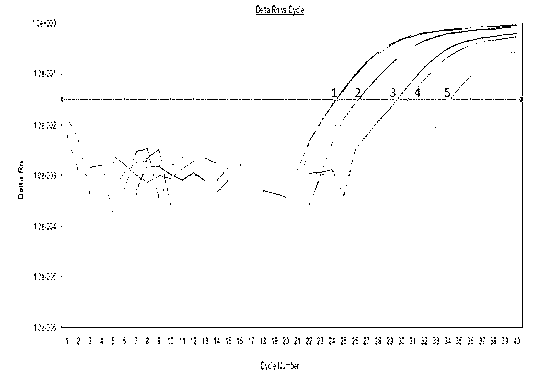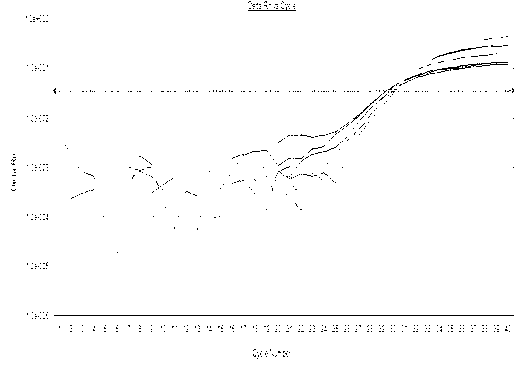Method for quickly detecting duck-derived components in food
A food and duck source technology, applied in biochemical equipment and methods, material stimulation analysis, microbial measurement/inspection, etc., can solve problems such as inaccurate test results, avoid false negative results, reduce the risk of interference, and operate convenient effect
- Summary
- Abstract
- Description
- Claims
- Application Information
AI Technical Summary
Problems solved by technology
Method used
Image
Examples
Embodiment 1
[0023] (1) Sample preparation and DNA extraction
[0024] Operate in accordance with the instructions of the TIANGEN (Tiangen) kit. 50mg of total DNA from samples (duck, chicken, donkey, beef, pork, rabbit, goose, fish, goat, sheep, corn, fennel, soybean, star anise, pepper) were dissolved in 100μL TE buffer , Use a nucleic acid protein analyzer to detect DNA concentration and purity. The results showed that the DNA of these samples met the conditions of fluorescent PCR detection.
[0025] (2) Primer and probe design
[0026] According to the duck (accession number: HQ008784.1) genome sequence (duck IL-2 gene) published in GenBank, the Primer Premier 5.0 software was used to design specific primers and probes, and then the primers and probe sequences were published on the NCBI website Blast analysis comparison and evaluation were carried out to ensure the specificity of primers and probes. The fluorophore FAM is used as the luminescent group of the probe. The primer and p...
Embodiment 2
[0037] 1) The actual detection limit analysis experiment of genomic DNA
[0038] Duck DNA template stock solution (concentration: 250ng / μL) was serially diluted, that is, 250 ng / μL, 25ng / μL, 2.50ng / μL, 0.25ng / μL and 0.025ng / μL 5 concentration gradients, using the optimized reaction system Check its detection limit. The experiment was repeated three times, and three parallels were set up each time, and the Ct value less than 36 was used as the positive criterion.
[0039] The result is as figure 1 As shown, when the template amount in the fluorescent quantitative PCR system is 0.5ng (0.25ng / μL*2μL), there is an obvious amplification curve, and the Ct values of duck DNA are 34.62±0.001. Then the actual detection limit of this fluorescent quantitative PCR detection system is 0.5ng.
[0040] 2) The influence of the amplification internal standard on the actual lower limit of detection
[0041] The minimum detection limit obtained above was used as the amount of target gene t...
Embodiment 3
[0046] Duck DNA from three individual sources with a concentration of 100ng / μL was randomly selected for fluorescent PCR. The experiment was carried out three times, and three parallels were set up each time to investigate the stability of the system. The results are shown in Table 3, and the results show that the standard deviations of the Ct values of the three independent repeated experiments of each sample are all less than 0.3. It shows that the test results have good repeatability and good test stability.
[0047] Table 3 Reproducibility test results of real-time fluorescent quantitative PCR detection method with dual TaqMan probes
[0048]
PUM
 Login to View More
Login to View More Abstract
Description
Claims
Application Information
 Login to View More
Login to View More - R&D
- Intellectual Property
- Life Sciences
- Materials
- Tech Scout
- Unparalleled Data Quality
- Higher Quality Content
- 60% Fewer Hallucinations
Browse by: Latest US Patents, China's latest patents, Technical Efficacy Thesaurus, Application Domain, Technology Topic, Popular Technical Reports.
© 2025 PatSnap. All rights reserved.Legal|Privacy policy|Modern Slavery Act Transparency Statement|Sitemap|About US| Contact US: help@patsnap.com



